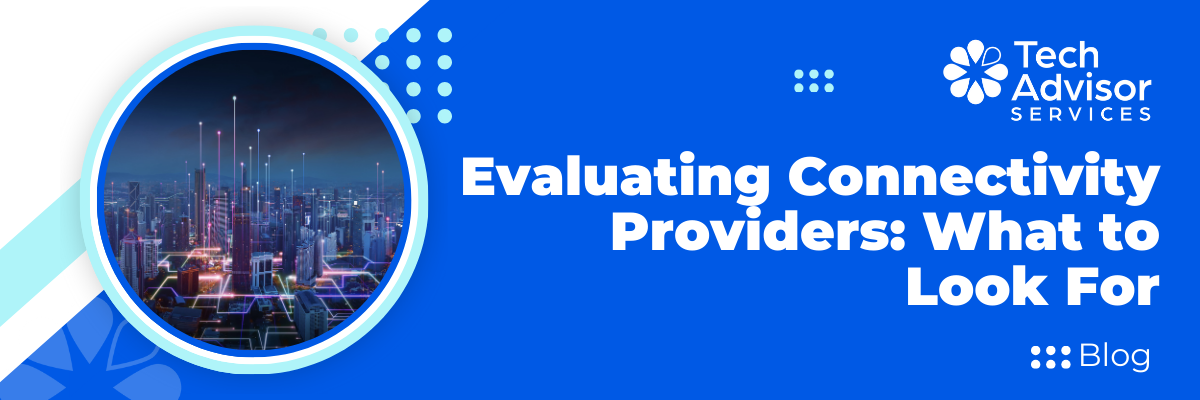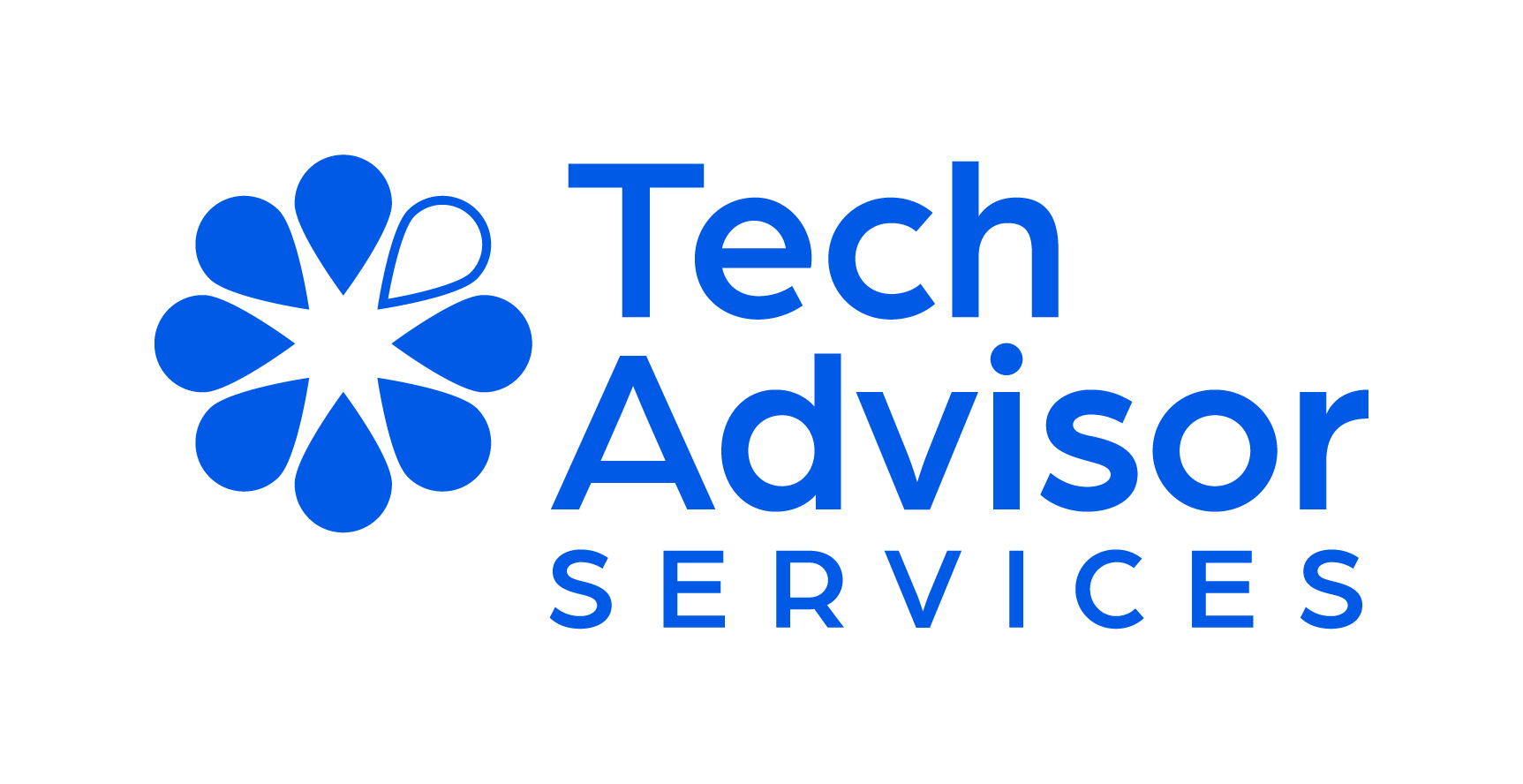New Title

Evaluating Connectivity Providers: What to Look For
When it comes to keeping your business connected, not all providers are created equal.
Whether you're running cloud-based applications, enabling hybrid work, or just trying to ensure smooth day-to-day operations, your connectivity partner plays a critical role in how reliably and efficiently your business runs.
But evaluating providers isn’t just about price. It’s about understanding how their infrastructure, support, and service models stack up against your business needs—today and in the future.
In this article, we’ll walk you through the key factors to consider when evaluating connectivity providers so you can make smart, informed decisions that support performance, scalability, and uptime.
Why Connectivity Matters More Than Ever
Connectivity is no longer just a utility—it’s a strategic advantage.
With distributed teams, real-time collaboration tools, cloud-first apps, and customer-facing digital services, your network has to be both reliable and high-performing to keep things moving. One glitchy connection or unexpected outage can cost more than just time—it can cost business.
If you're considering switching providers or assessing your current setup, this is your opportunity to strengthen one of the most foundational parts of your IT stack.
Key Considerations When Evaluating Connectivity Providers
Let’s dig into what really matters.
1. Network Reliability and Uptime Guarantees
Every provider talks about uptime—but how do you cut through the noise?
Look for:
- SLAs (Service Level Agreements): Do they guarantee 99.9%, 99.99%, or 99.999% uptime? That extra decimal point can mean minutes vs. seconds of downtime.
- Network Redundancy: Do they offer multiple fiber routes or failover options? Redundant paths reduce the risk of a single point of failure.
- Proactive Monitoring: Is their network actively monitored 24/7? Are you alerted before your team notices an issue?
A reliable provider should have nothing to hide when it comes to uptime stats and infrastructure design.
2. Geographic Coverage and Last-Mile Access
Many businesses overlook the importance of last-mile connectivity—that final stretch from the provider’s network to your building.
Here’s what to ask:
- Do they own their last-mile infrastructure, or do they lease it from others?
- Is fiber available to your location, or will it be delivered over copper or fixed wireless?
- If you have multiple sites, can the provider service them all, or will you be juggling multiple contracts?
A strong provider should offer clean, end-to-end control or have a clear partnership model to deliver last-mile reliability wherever you are.
3. Bandwidth and Performance Flexibility
Not every office or location needs the same bandwidth. And your needs today might not match your needs next quarter.
Make sure the provider can:
- Scale your bandwidth up or down without major delays or fees.
- Offer bursting capabilities if you have high-traffic periods.
- Support QoS (Quality of Service) if you’re running VoIP, video, or latency-sensitive apps.
You want flexibility without penalty. That means avoiding providers who lock you into fixed, long-term bandwidth tiers with high overage charges.
4. Security Features and Network Segmentation
A good connectivity provider doesn’t just offer transport—it offers protection.
Evaluate their:
- DDoS protection as part of standard service
- Private networking options (e.g., MPLS, private fiber)
- Built-in firewalls or security partnerships
- Ability to integrate with SASE or SD-WAN solutions
Security should be baked into the network—not something you have to bolt on later.
5. Support and Responsiveness
When something goes wrong, how fast can you reach someone who can help?
Ask:
- Is support 24/7, or just business hours?
- Do you get a direct account manager or a generic ticketing system?
- What’s their average response time—and how is escalation handled?
Don’t wait until an outage to find out if your provider takes support seriously. Choose one that treats your business like a partner, not a number.
6. Contract Flexibility and Pricing Transparency
Lengthy contracts, surprise fees, and early termination penalties can turn a great-looking deal into a nightmare.
When reviewing terms:
- Look for month-to-month or 1-year options if you're in a growth phase.
- Be cautious of "teaser" pricing that jumps after year one.
- Clarify what's included—installation, hardware, monitoring, service calls—and what's not.
You want a provider who’s confident enough in their service that they don’t need to trap you in a 3-year commitment to keep your business.
7. Integration With Other Services
Today’s IT leaders are thinking about connectivity as part of a larger stack—not a siloed decision.
Ask about:
- Support for SD-WAN, cloud direct connect, or private peering
- How they integrate with your existing voice or UCaaS solutions
- Ability to bundle managed Wi-Fi, security, or failover services
Providers that work well within a broader ecosystem will save you time, money, and frustration down the road.
Bonus: Don’t Overlook the Power of Provider Aggregation
One of the smartest moves mid-sized and enterprise organizations are making today is working with a connectivity consultant or aggregator—like Tech Advisor Services.
Why?
Because aggregators:
- Help you compare providers side-by-side
- Offer access to exclusive pricing not always available direct
- Can design hybrid networks using multiple carriers for redundancy
- Provide single-pane billing and ongoing account management
In other words, you get options, leverage, and someone in your corner who understands both the technology and the fine print.
Final Thoughts: Build for Now and What’s Next
Choosing the right connectivity provider is about more than speeds and feeds. It’s about creating a foundation your business can build on.
As applications get more cloud-heavy, as employees work from anywhere, and as security threats grow more complex, the network connecting it all becomes a critical part of your business strategy—not just your IT plan.
Taking the time to evaluate providers across performance, support, flexibility, and integration isn’t just smart—it’s necessary.
How Tech Advisor Services Can Help
At Tech Advisor Services, we work with dozens of vetted, top-tier connectivity providers across the country—and help businesses design the right-fit solution for their unique needs.
We’re vendor-neutral, which means we don’t push one provider over another. Instead, we focus on helping you:
- Compare carriers side-by-side
- Build for resiliency, performance, and future growth
- Reduce complexity with centralized sourcing and support
Need help evaluating your current network or planning your next move?
Let’s talk.
